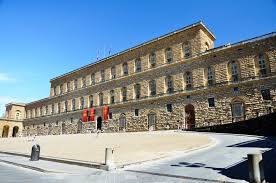Unlocking Italy through literature

Sophie Magalhães
Florence: Once upon a time in the 1850s, Elizabeth Barrett Browning wrote the following, looking out from her residence at Casa Guidi around the corner from Palazzo Pitti:
I heard last night a little child go singing // ‘Neath Casa Guidi windows, by the church, // “O bella libertà! O bella!” stringing // The same words still on notes he went in search…
These are the opening lines of her poem Casa Guidi Windows. Transfixed by the elegant Renaissance capital, Barrett Browning was a fierce supporter of Italian unification. For the Brownings the city pulsated with artistic life and freedom. Her husband, Robert Browning, ventriloquized Renaissance masters in his dramatic monologues Fra Filippo Lippi and Andrea del Sarto; Elizabeth gave us Casa Guidi Windows and Poems before Congress, powerful musings on liberty and independence at the height of unification.
This influx of Italy-inspired literature accompanied the surge of well-to-do Edwardian tourists travelling to Florence and throughout Italy, eager to see the landscapes and culture that enchanted these writers. From these observant travellers, E.M. Forster gave us Where Angels Fear To Tread and A Room With A View, Henry James wrote Italian Hours and John Ruskin Mornings in Florence. In search of Libertà, each author capitalized on the artistic freedom to carve out what Italy meant to them: beauty, escape, disillusionment and desire.
Italian literature transfixed me when I got my hands on Elena Ferrante’s My Brilliant Friend during lockdown. Ferrante was followed by Cesare Pavese, then by Natalia Ginzburg. When I polled friends on Instagram to ask what appealed to them most about Italy, the overwhelming replies were books. When I came to Florence for the first time aged 19, Pavese’s La Bella Estate came with me. It is a charming story of a coming-of-age summer when 14-year-old Ginia befriends a 22-year-old artist’s model. I found the idea fascinating that the passage into adulthood for Ginia is not accompanied by tortured romances, but by the maturity of a friend and confidant.
That summer, studying art and Italian, I met a vibrant cast of characters: an endlessly energetic Polish art student; a vivacious 40-year-old linguist, who rid me of any age anxiety I’d been possessed with; and a group of South Americans, who taught me what going out really meant. That first Florentine summer represented my abandonment of teenage shyness and a sprightly zest for life in realizing how fascinating people could be once you got to know them. Ginia’s freedom led by example.
With the glowing nostalgia of the previous summer still coursing through me, I was determined to return to Florence in 2023: this time, to become fluent in Italian. In my carry-on was Jhumpa Lahiri’s In Altre Parole. Lahiri recounts her cultural and linguistic journey into Italian, describing a consuming desire to speak it perfectly and to feel natively Italian. How futile, I thought. There’s a kind of magic in being a visitor: a joy in learning a language from the ground up and connecting with a new city, stirred by unfamiliarity. That was my reason for learning Italian: a language familiar in its lexical similarity to Portuguese, yet still foreign enough to feel new. Deepening familiarity became the theme of summer 2023: feeling alive in a temporary home I already knew and loved.
I hadn’t expected to return to Florence over summer 2025 until I found an email from The Florentine in my inbox offering a month-long internship. I was ecstatic, envisioning myself once again amongst the domes and spires of my favourite Italian city, two years older and unburdened by university obligations. Living in Madrid with little suitcase space, I arrived bookless. But on my first full day in Florence, I paid a visit to my favourite Villa Bardini to see the Anna Banti and Roberto Longhi exhibition.
Banti was captivated by Artemisia Gentileschi, the Baroque painter known for her dramatically violent Judith Slaying Holofernes, which hangs in the Uffizi. After surviving rape by her tutor Agostino Tassi and facing him in public trial, Artemisia left Rome aged 19 to pursue her artistic career in Florence. The city ushered in her artistic awakening as she became the first woman admitted to the Accademia delle Arti del Disegno and established her reputation as Caravaggio’s feminine equal.
I first encountered Artemisia through her celebrated painting five years ago at school. Despite not being part of the Baroque curriculum, my history of art teacher rebelled against the status quo to give us a taste of this truly unique woman. Banti’s devotion to Artemisia generated her 1947 novel Artemisia. Though her first manuscript was destroyed in the rubble of the Second World War, she rewrote it from memory, giving us the book I am reading now. Artemisia, saved by painting, found her liberty in Florence.
Like Banti reimagining Artemisia, I’m piecing together memories from previous summers, working out how to immortalize them. The Brownings chose poetry, Ruskin and James opted for essays, while Banti wrote a novel. Perhaps this article is a start.





